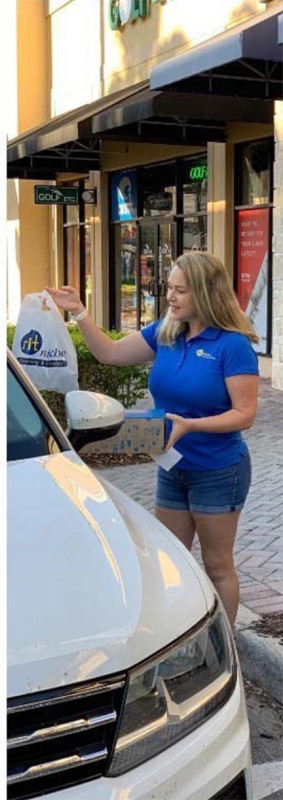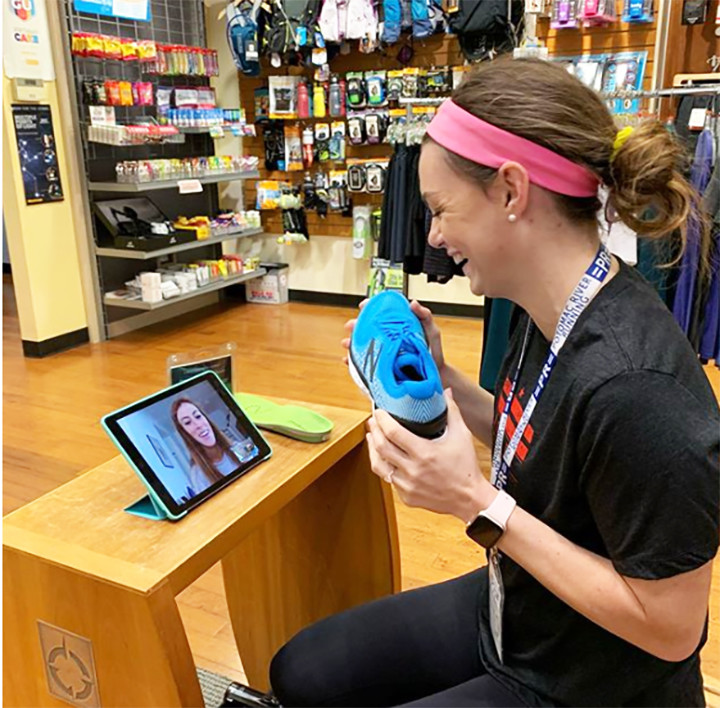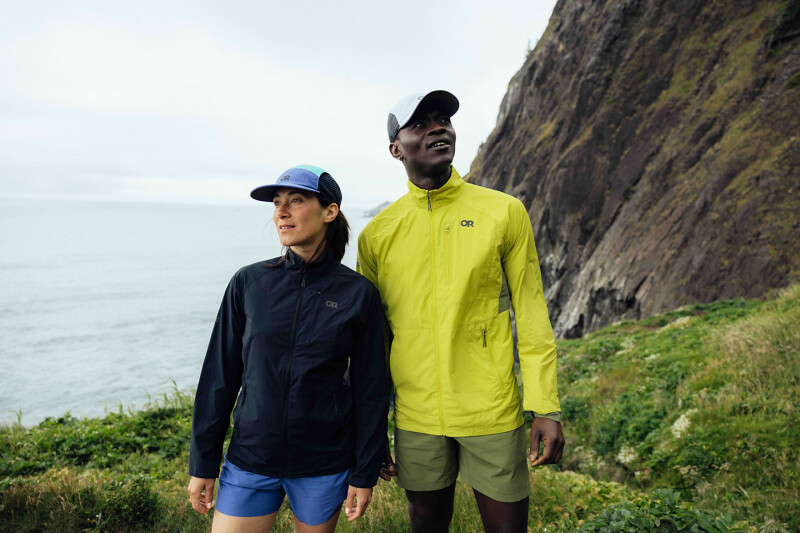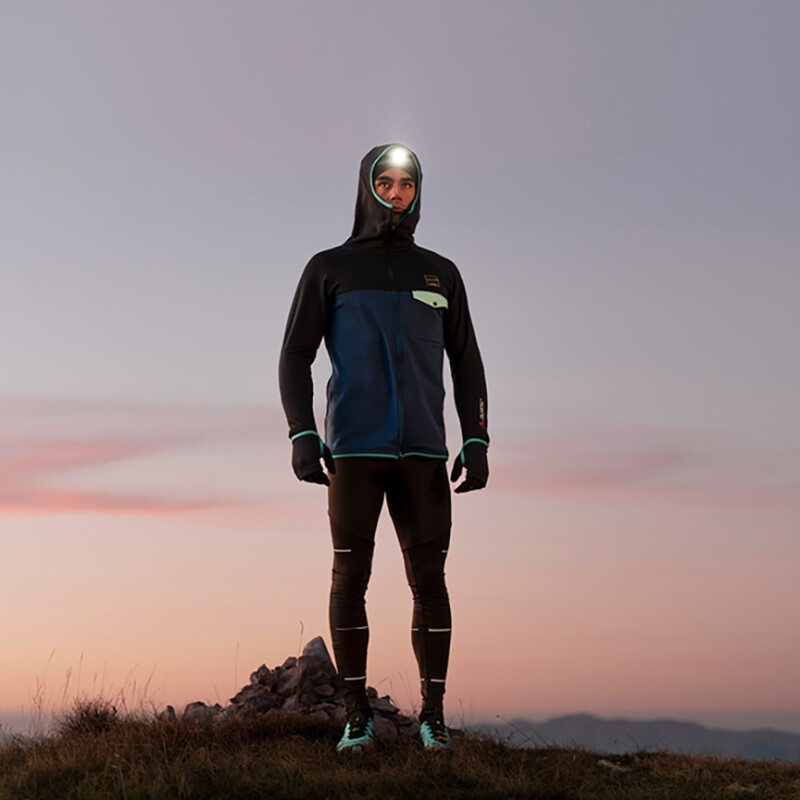Survival mode. That is the way that running stores came out of winter in 2019-2020. Amid the pandemic crisis, stores with a spirit of creativity and experimentation made a lifeline while nature, the public and government sort out recovery.
Run specialty has always had legendary customer service. Responses to the pandemic have added to the lore. Without benefit of human contact, and up against nearly universal stay-at-home orders, the customer experience moved virtual. No surprise there, since we have seen blockbuster movies go directly to streaming, families and friends get together on Zoom and restaurants reconfigure their entire business model toward takeout and delivery.
Within the model for restaurants lays the template for run specialty retail. Ordering online, curbside pickup and delivery are pillars for restaurants — and now for running stores as they tentatively reopen across America. But rather than see these as temporary coping strategies to get through the pandemic, forward-thinking retailers like Tom Mansfield of Baltimore-based Charm City Run are wondering: “What will the brand look like in five years? Things won’t ever go away. How do we get better? How do we continue to do these things in addition to what we have always done?”
Now, while much of the country contemplates reopening and figures out what practices to bring back, some new practices are all but assured to stay.
Virtual Fitings Are Here to Stay
First among these are virtual fittings. For an industry proud of the in-store experience, and reliant on foot traffic, nothing could seem more alien than fitting shoes over the Internet. Execution of virtual fitting also highlights other new best practices for survival, such as omnichannel-everything, schedule-your-experience, direct-to-customer delivery and one-to-one customer communication.
Coordinated effort among multiple players in the industry pushed virtual fitting to market nearly overnight. To roll out the new service, retailers like Pacers in Washington, D.C., feature new web pages and e-mails with premium artwork created by Runhouse, along with a step-by-step description of the process. Lakeland, FL–based FITniche posted a video describing its own virtual process. To push the practice industrywide, marketing agency Upper Quadrant created an online toolkit, which included free access on its website to the original high-quality Runhouse images and e-mail templates, along with other how-to’s and downloads from Upper Quadrant, Brooks and Race Roster.
However, according to Mansfield, the most surprising feature of virtual fitting is that it can actually be more intimate than a traditional in-store fitting experience. “Initially the idea was a little weird,” he says. “The customer might think it’s weird. It was a lot of new customers and [virtual fitting was] something a lot of us had never done.”
But without other customers to assist, phones to answer or additional in-store distractions, the Zoom fittings have proven to be truly one-to-one.
Unintended sales are another benefit. Quarantined families overhear the process and jump in. “I’ll be talking to one person, then they ask, ‘can you talk to my husband too?’ and the next thing you know you’re selling three pairs of shoes,” says Mansfield.
Online Scheduling Catches On
Scheduling the customer experience online is another element of the new omnichannel reality.
Potomac River Running in the Northern Virginia/D.C. area has been scheduling in-store fittings online for nearly two years, a practice that has gone from convenient to essential. Even under lockdown conditions, where non-essential business operations were restricted and foot traffic diminished, the demand for scheduling in-store fittings at Potomac River has remained constant compared to the same time last year.
Combined with appointments for virtual fitting, Potomac has seen significantly higher demand for its expertise. Post-pandemic, scheduling online will continue grow until it is simply an expected practice of retail stores.

Omnichannel Logistics
After fittings, customers need to obtain their products safely. They do this by making purchases via phone, in-store or via e-commerce, and then either opting for curbside pickup, free shipping or same-day courier service to their door. All of these options will continue after the pandemic.
“We are pedal-down on anything we can have to be a light,” says Mansfield. “Take-out food hasn’t gone away. Why not take-out retail? Why do they need to go into the store if they know exactly what they want?”
The same attitude applies to door-to-door delivery. Delivery services for food have expanded significantly in recent years. Customers will expect the same service from retail establishments. Mansfield believes the service is an investment in each customer relationship.
“You call the store. You ask. We offer delivery, same day to the house. It makes people feel special,” he says. “We are in the business of making people feel special.”
The E-mail and Text Effort
While virtual fitting is the most prominent change made by retailers, the pandemic stress test has also brought to light existing practices requiring new emphasis. Most importantly has been capturing customer e-mail addresses.
With no foot traffic and closed stores, retailers with low e-mail capture rates had limited ability to reach customers directly and let them know that they remained open for business and were eager to serve, albeit virtually.
The need to reach customers directly has also raised the profile of a seldom-used communication channel: SMS/text messaging. Potomac River, already a leader with schedule-a-fitting, also leads with text utilization, rendering nearly all customer phone inquiries answered, either by voice, or by personal text, or by bot-text, for common questions.
Unlike e-mail, SMS/text messaging has a 99 percent read rate (90 percent within three minutes of delivery), thus making it a strong candidate for growth. Additionally, texting is also the ultimate antidote to e-mail fatigue, an issue with which we all struggle.
Change Will Continue
More has changed in the last three months for retail than anyone could have imagined. While it is impossible to say what will happen one year from now, much less during the next three months, nearly all experts agree a second wave of the pandemic cannot be ruled out.
These new and newly emphasized tactics by leaders like Charm City, Pacers, FITniche, Potomac, Runhouse and Upper Quadrant are not just case studies in what worked this past Spring 2020, but likely are a road map for Fall 2020 and beyond.
Change this fast is not easy. “Never more proud to be part of this industry, this store. It made me appreciate our team and customer base more than ever,” says Mansfield.
What will never change is legendary customer service, incredibly resilient run store customers and rewards for creative retailers. n
Dean Gill is a client service director for run specialty at Upper Quadrant. He can be reached through its website, www.upperquadrant.com, or at [email protected]






